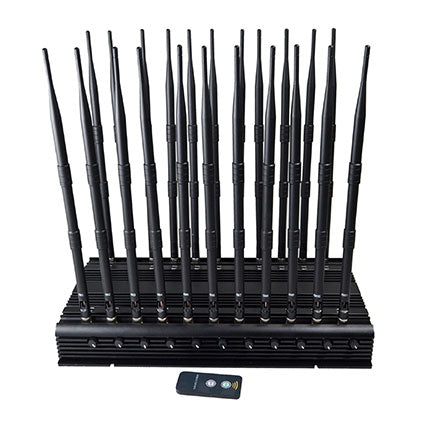Full-band signal jammers are produced in a modular manner
The full-band signal jammer is a device that has attracted much attention in modern society, and it is expected to help people effectively avoid various interference problems. However, with the widespread popularization of mobile communication terminals, conventional low-power signal jammers also face various challenges and limitations. In this article, we will focus on the new generation of modular full-band signal jammers and their advantages over traditional full-band signal jammers.
For the previous full-band signal jammer, the basic design idea is to increase the corresponding interference frequency band (jamming module) for the new mobile phone frequency band. The whole device is composed of several interference frequency bands that are superimposed and installed side by side in the full-band signal shielding on the built-in radiator. In this way, whenever some frequency bands are added, the appearance and size of the device will gradually increase accordingly. Although this approach can ensure that the device supports the latest frequency band, its disadvantages are also obvious. First of all, when the frequency band of the new generation standard appears, customers who originally purchased equipment can only purchase new equipment. Secondly, the old equipment lacks room for upgrading and can only be discarded, which causes a lot of waste.

Faced with such problems, Nanjing Bokang Electromechanical Technology Co., Ltd. has designed, developed and produced a new generation of modular full-band signal jammers since 2008. Different from the previous practice, we pre-group some fixed interference frequency bands, and then assemble this group into a modular structure. In the end, the entire signal jammer only needs 2-3 modular structures to assemble and combine. The advantage of this modular structure is that when customers face frequency band upgrades or technology replacements, the original modular structure of the full-band signal jammer can still be retained, and only a new modular structure is required for assembly. In this way, customers do not have to purchase new equipment every time, and waste and waste of resources are also reduced.
In addition to better flexibility and upgradeability, the new generation of modular full-band signal jammers has the following advantages:
First, it uses advanced semiconductor technology that allows for smaller size and higher efficiency. This is more portable and takes up less space than traditional full-band signal jammers. Secondly, it can support a variety of different frequency bands and protocols, such as 2G, 3G, 4G and 5G, etc., which makes it more versatile and suitable for various occasions. Finally, it can also be equipped with an advanced artificial intelligence module to identify and shield interference signals in different frequency bands through monitoring and analysis, so as to ensure its efficiency and stability.
To sum up, the new generation of modular full-band signal jammer is a device with great potential. It can provide customers with better flexibility, upgradeability, and versatility, and it is also expected to solve the upgrade limitations and resource waste problems of old equipment. We believe that this new type of equipment will be widely used and promoted in the future.













